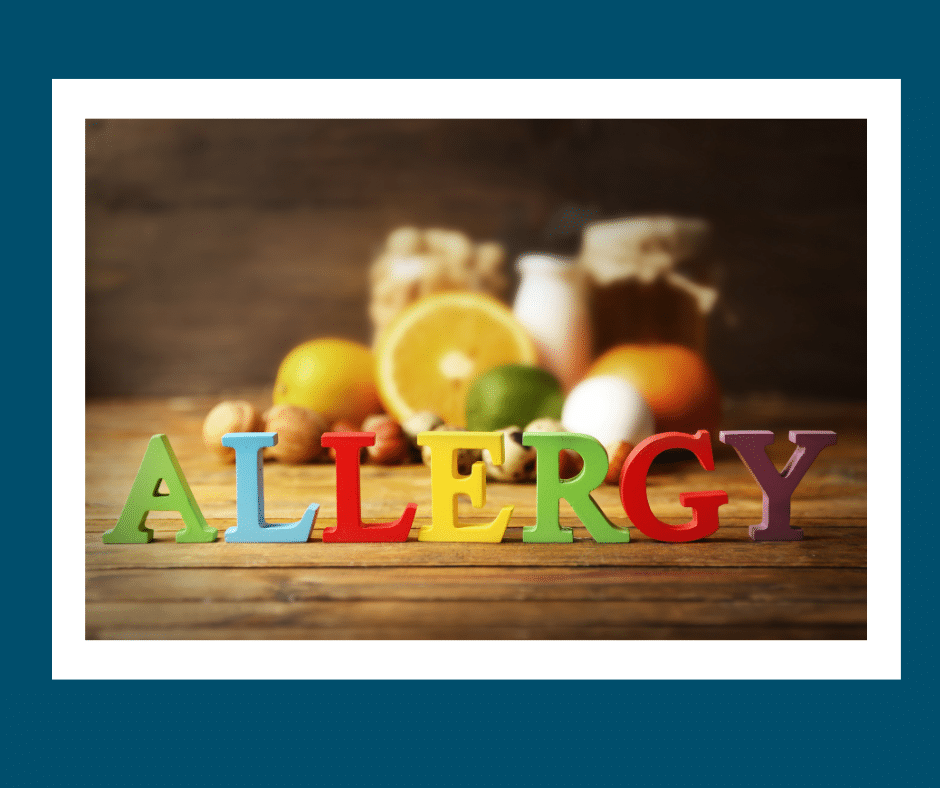Australian children have the highest prevalence of food allergy in the world. Parents are stressed and childcare providers are at the frontline. With so many guidelines and responsibilities, we’ve compiled 5 top tips for reducing worry and risk for all.
1. Communication, Communication, Communication
Parents of allergy-affected children are seeking reassurance than ever. Research shows that a child’s allergy can significantly affect parental anxiety and mental health. A study published in the World Allergy Organization Journal found that: “When parents are shunned, labelled a ‘helicopter parent’ or worse still, not believed, this creates a heightened sense of anxiety and fear and can significantly impact quality of life, increase social isolation, and lead to feelings of guilt”.
There are official guidelines around medical documentation and action plans required from parents – and annual meetings to discuss risk minimisation strategies for their child. However, from our work and talking to parents, we recommend a few extra measures to make a big difference to parents’ peace-of-mind.
- A meeting before the child starts at childcare: explain your approach, how you will work to protect their child, the next steps (documentation and plans) and how you will keep the lines of communication open.
- Include the main carer in the child’s room in this meeting: don’t underestimate the comfort it brings for parents to ‘feel’ the commitment of carers who spend the most time with their children.
- In the event of relevant staff changes or relief staff, assure parents that new staff members have been individually briefed – and make sure that happens.
- Raise awareness throughout your childcare community (parents, carers and staff) about the different allergies you’re managing and your anaphylaxis management plan, including your current policies and staff training.
- Show real empathy by suggesting extra resources for parents – like this webinar about managing anxiety and the risk of anaphylaxis prepared by Allergy & Anaphylaxis Australia.
2. Education – and bullying prevention
Books, role play and ‘show and tell’ can help children with allergies feel more understood – and peer awareness may even lower the risk of future ‘food allergy bullying’. Research shows that children and adolescents with food allergies are more likely to be a target of bullying than their peers without food allergies. Education can encourage more supportive friendships – and increase the likelihood of children alerting staff if they notice a peer experiencing symptoms. My Food Allergy Friends has great books and posters, as well as Allergy & Anaphylaxis Australia.
3. Staff training and awareness
Train all staff regularly, not just those preparing and serving food. The prevalence of allergies can be stressful for staff and knowledge brings confidence. All staff should know how to recognise and treat allergic reactions quickly, as unexpected allergic reactions can also happen in undiagnosed children. Free online training designed for children’s education and care is available as part of the National Allergy Strategy. It should be undertaken at least every two years but we recommend annual refreshers. Make sure you understand the National Regulations detailing requirements for anaphylaxis management training in childcare centres. ASCIA anaphylaxis e-training for children’s care services is a free online course.
4. Risk minimisation
This one can be complex! It’s impossible to completely remove the risk of allergic reactions, but you can reduce risk. A great list of ideas can be found here and here – including managing mealtimes, special events, cooking activities and playtime
5. Awareness not bans
The National Allergy Strategy now recommends ‘allergy awareness’ rather than blanket food bans. This approach prefers risk minimisation strategies to ‘guaranteeing’ a food won’t be bought into the premises – as this can be impossible to monitor and can lead to a false sense of security. Many centres don’t include nuts in their menus as these are not essential and can be eaten at home for non-allergic children. On the other hand, foods such as wheat, milk (dairy) and egg provide key nutrition and shouldn’t be removed from menus completely. At The Wellbeing Food Company, we’re passionate about helping childcare centres, children and families to thrive – no matter what their dietary or cultural food requirements. Our breakthrough technology analyses over 50 allergen ingredients against individual dietary needs. It allows us to offer chef-designed menus, overseen by dietitians, at scale using a home-based cooking philosophy so they are tasty and nutritious for everyone. Allergy-safe meals are individually sealed and labelled to eliminate guesswork and cross-contamination risk. Because every child deserves to eat great food – and providers and parents deserve simple certainty, every day.
Want safe and sensational meals for your childcare, with lashings of simplicity and confidence? Let’s talk.



Comments are closed